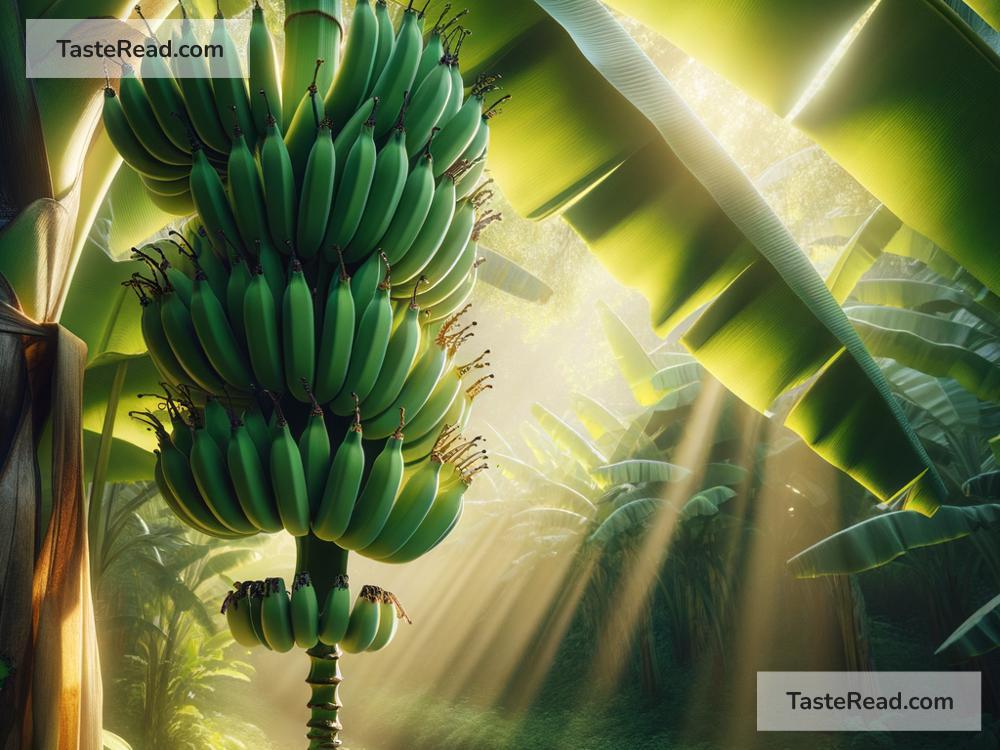Why Bananas Are Harvested Green: The Secret Behind Your Favorite Fruit
Bananas are one of the world’s most-loved fruits. Whether you eat them as a snack, blend them into smoothies, or bake them into delicious treats, bananas are everywhere. But have you ever noticed that bananas are usually harvested green? You might be curious why farmers don’t wait until they’re yellow and ripe before picking them. The answer lies in how bananas are grown, transported, and sold, as well as in how their natural ripening process works. Let’s explore why bananas are harvested green in simple terms.
Bananas Don’t Ripen Like Other Fruits
When most fruits are picked, they’re usually already ripe. Apples, oranges, or berries are ready to eat right off the tree or vine. Bananas, however, are a little different. They belong to a group of fruits called “climacteric fruits.” This means they continue to ripen after they’ve been picked.
Bananas don’t need to stay on the plant to turn yellow. Once they’re picked, they naturally produce a gas called ethylene, which helps them ripen. Because of this special trait, bananas can be harvested before they ripen and still turn into sweet, yellow treats after some time.
Why Harvest Bananas Green?
There are several reasons bananas are harvested while they’re still green. Most of these reasons have to do with practicality and the journey bananas take to get to your grocery store.
1. Bananas Ripen Quickly
Bananas are fast-ripening fruits. A ripe banana doesn’t stay fresh for long—it turns soft, gets brown spots, and eventually becomes overripe. If farmers were to pick bananas once they turned yellow, they wouldn’t last through shipping and storage. By harvesting them green, farmers can control the ripening process to make sure bananas reach stores and customers at just the right time.
2. They Need to Travel
Most of the bananas we eat don’t grow nearby. In fact, they are often shipped from tropical countries where the weather is warm and humid—perfect for growing banana plants. Some of the top banana-exporting countries include Ecuador, the Philippines, Costa Rica, and Colombia. From there, they’re transported by boats, trucks, or trains to supermarkets worldwide.
This journey can take days or even weeks. If bananas were picked ripe, they would rot before arriving at stores. Harvesting them green ensures they stay firm and fresh during transportation.
3. They’re Easy to Handle When Green
Green bananas are hard and less delicate compared to ripe bananas. This makes them easier to handle during harvest and transport. Ripe bananas bruise easily and can even split open, making them difficult to package and ship. Green bananas are much more durable, allowing farmers and suppliers to pack and move them without worrying about damage.
How Do Green Bananas Turn Yellow?
Bananas go through a natural ripening process after they’re picked. Once they’re harvested, they’re often stored under specific conditions to control how fast they ripen. For example, bananas are sometimes kept in cool storage or treated with ethylene gas to speed up their ripening closer to the time they’ll be sold.
When bananas reach stores, they are usually yellow (or starting to turn yellow) because they’ve been ripening during transport or storage. Once they’re in your home, they continue to ripen on your counter. You’ve probably noticed that a green banana turns yellow within a few days, and eventually develops brown spots if left too long. This is all part of their natural ripening process.
Harvesting Green Bananas Helps Reduce Waste
Harvesting bananas while they’re green isn’t just convenient—it’s also an important way to reduce food waste. If bananas ripened too early, they would spoil before they could be sold or eaten. This would lead to significant waste, especially since bananas are one of the most consumed fruits globally.
By controlling the ripening process, farmers, suppliers, and retailers can make sure bananas last long enough to reach your home in the best condition. This approach also saves money for businesses and makes bananas more affordable for consumers.
Green Bananas Are Useful, Too!
While most of us prefer to eat bananas when they’re ripe and sweet, green bananas have their own uses and benefits. In some cultures, green bananas are cooked and eaten as part of savory dishes. They can be boiled, fried, or mashed. Green bananas are firmer and less sweet than ripe bananas, making them great for certain recipes.
Additionally, green bananas are high in a type of fiber called resistant starch. This starch is less digestible than the sugars in ripe bananas, meaning green bananas can be a good choice for people looking to manage their blood sugar levels.
Conclusion
Bananas are harvested green for practical, economical, and logistical reasons. Since bananas ripen after they’re picked, harvesting them green ensures they stay fresh during transportation and reach stores in good condition. It also helps reduce waste and makes bananas easier to handle and transport.
Next time you bite into a delicious yellow banana, you can appreciate the journey it took to get to your plate. From growing on a tropical farm to ripening at just the right time, bananas are truly a fascinating fruit—and now you know the secret behind why they’re picked green!


